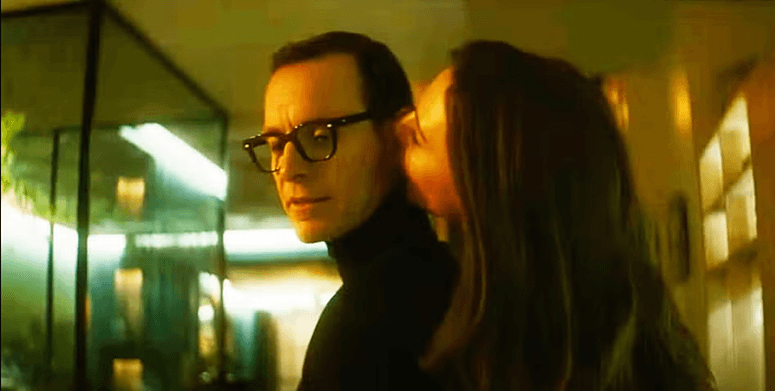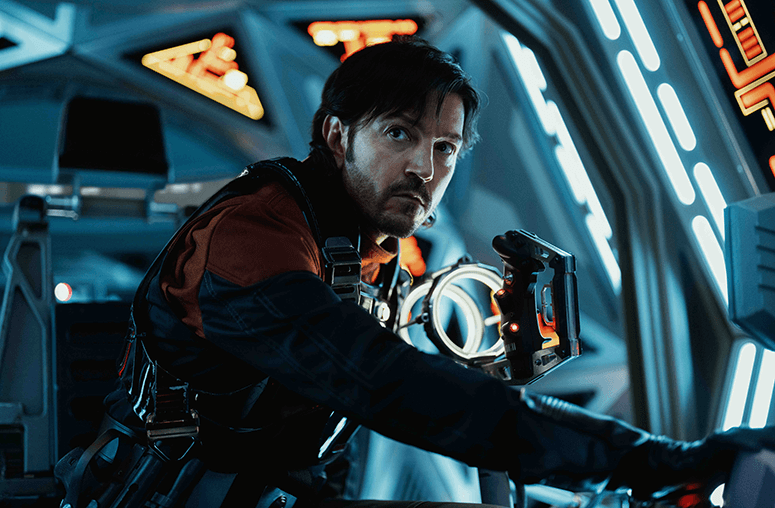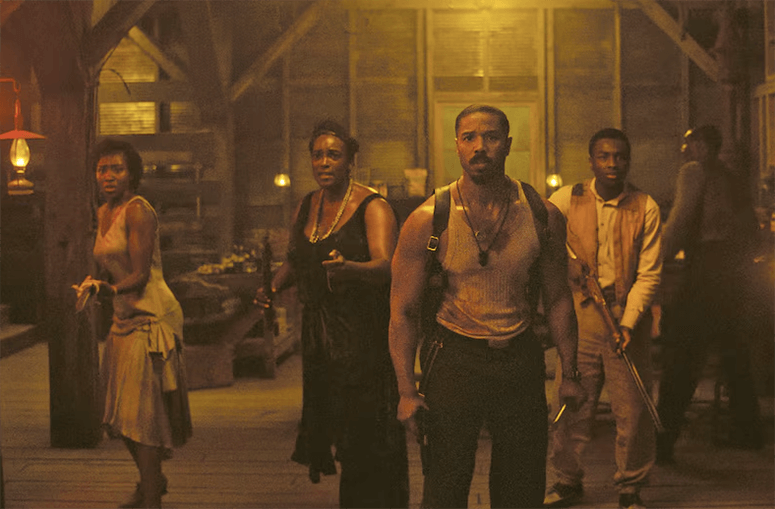Soderbergh’s sleek spy versus spy
Black Bag, Steven Soderbergh’s pop art-house spy thriller that boasts both Michael Fassbender and Kate Blanchett, is mostly played out on office furniture—instead of high-speed chases or spelunking cliffs, agents weigh security options around conference tables, hover over computer consoles, or chat away on rolling desk chairs.
But two of the main scenes play out across a dining table in the dimly lit home of George Woodhouse (Fassbender) and Kathryn St. Jean (Blanchett), two British intelligence agents whose “solid” relationship is the envy of others seeking a level of trust within the agency, the top-secret National Cyber Security Centre (NCSC). That’s where we learn how good George is at spotting a lie. And—like the infamous Fassbender bar game scene in Inglourious Basterds—it ends in bloodshed.

The conceit of Soderbergh’s Black Bag, written by David Koepp, is that dating is hard when you’re a secret agent. Any time you get too close to a lover, they hie off to Amsterdam, or Russia, and when you ask what’s up, they mutter “Black bag.” Meaning it’s a secret operation they can’t talk about. (Seecret!)
Very convenient when, like agent Freddie (Tom Burke), you’re cheating on your girlfriend Clarissa (Marissa Abela), or every other permutation of inter-agency skullduggery between the sheets in the spy game. As one character puts it, “When you can lie about everything, how do you tell the truth about anything?” Infidelity equals spycraft in this John Le Carré riff that keeps a tight bead on its central characters, George and Kathryn, as their perfect match begins to show signs of suspicion and surveillance.
It’s a sleek, sexy thriller with hints of mayhem, a little like Challengers, the Zendaya tennis drama that was all about playing and being played. Here, George and Kathryn are set up to be such a perfect couple, you can’t help having your own doubts.
We learn there’s a mole at NCSC, someone set to release a cyber-worm/MacGuffin called Severus, and George, with his famous lie-detecting skills, must ferret him or her out in time. Koepp (who also scripted Soderbergh’s Kimi and Presence) crafts a smart thriller that’s just long enough not to get bogged down in third-act problems, and Soderbergh—along with the star power of Fassbender and Blanchett, Naomie Harris (No Time to Die) and Regé-Jean Page (Bridgerton)—keeps it all stylish and seamless.
‘Andor’ rides again

Played by Diego Luna, Cassian Andor is the rogue bida we’ve come to expect from Star Wars cosmology: a reluctant rebel who possesses a bit of dash and leadership quality when put to the test. But he’s not the main thing driving Tony Gilroy’s elaborate prequel to Rogue One: there are lots of moving parts in the world of Andor that, in its season 2 finale, centers around Ghorman, a wealthy urban hive which happens to be where a massacre of peaceful protestors by Imperial Troops took place in season 1. Ghorman is the spark for a galaxy-wide rebellion, and while Cassian has the more action-filled moments in Andor 2, it’s all the mechanics and politicos and smugglers and antique dealers — like Luthen Rael (Stellan Skarsgard)—who keep the machinery running, all leading right up to when Rogue One begins: the stealing of Death Star plans, and the rebels’ mad dash to bring it all down. “You’re thinking like a thief,” Luthen tells Cassian when he doubts the rebels are ready for action. “Think like a leader.”
Andor is the kind of show you settle in with and enjoy the details: Gilroy was granted license (and budgets) to create worlds—specifically, Ghorman and Coruscant—and all this scaffolding tightens and tightens in the final season, adding up to something you feel like you believed in all along: hope, action and redemption.
Ryan Coogler’s vampire roadhouse
Also on screens this past week was Ryan Coogler’s third outing for Michael B. Jordan, Sinners, in which Jordan plays twins—Smoke and Stack —two former WWI vets who flee Chicago mob operators and return to their Southern stomping grounds to open a blues juke joint. What could go wrong? In this inspired riff on grindhouse that’s laced with racial blue notes, it’s the presence of cracker vampires in their Mississippi home, the kind who (as in all vampire pictures) must be personally invited in with their fiddles and Hee-Haw overalls before they can cross the threshold.

Coogler has great fun with the setup, bringing together a bunch of local blazers like guitar-wielding Sammie (Miles Caton) and pianist Delta Slim (Delroy Lindo), plus slinky past girlfriends Hailee Steinfeld and Jayme Lawson. Smoke’s wife Annie (Wunmi Mosaku) has the juju sense to tell the assembled—holed up in a sawmill-turned-jukejoint for a long night—not to let in the white trash and to munch on garlic while they gather wooden stakes.
Why not a cross between a Tarantino-Rodriguez drive-in flick like From Dusk ‘Till Dawn and a Southern blues standoff? Like Jordan Peele, Coogler knows the horror genre is rife with material, and the movie gets creepier and creepier as the Irish vampires start making with the line dancing. Dig a little deeper and you realize it’s a metaphor for the Western/white absorption of world culture, and possibly for Coogler’s own huge success within the Hollywood machinery (Creed, Black Panther). But there’s also room for visionary set pieces, like the scene with every generation of world music getting down on the juke joint dance floor. And those vampires singing Irish jigs? Creepy as hell.
Black Bag opens May 7 at Ayala Cinemas. We’re midway through the Disney+ second season, with six more episodes to drop. Sinners is still showing at cinemas.


